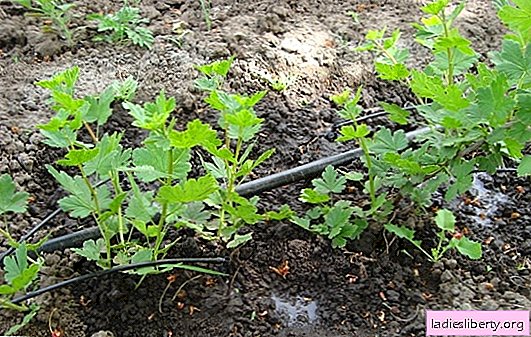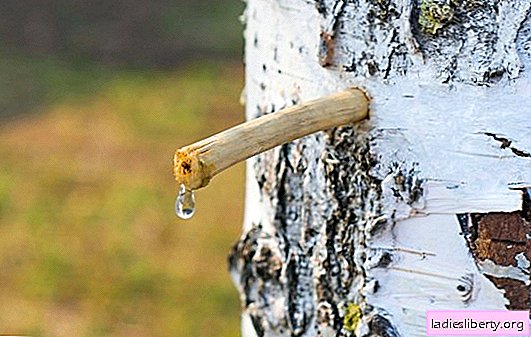
Gooseberry is a high-yielding and perennial garden culture, loved by many gardeners and summer residents.
Gooseberry care is based on fairly simple principles for its cultivation. Timely watering, loosening the soil, the choice of sunny places for planting, as well as the preventive treatment of this shrub from pests, this is the main care for this picky plant.

But the reproduction of gooseberries is not quite an easy task. To a greater extent, success in this matter depends on the choice of a particular plant variety. And for each variety there is a method of propagation suitable for this particular plant for a number of reasons of its individual nature.
For example, it is recommended to propagate the European gooseberry variety by layering, the hybrid one - by greenbacks or combined cuttings. But the lignified processes of gooseberries reproduce poorly due to their weak rooting.
You can even try to propagate this shrub in a seed way, however, this method will bring a crop soon, and the fruits in taste and size will be very different from the mother plant.
Gooseberries can even be grafted onto different types of currants, but there are ways that are much simpler and less labor-intensive.
Gooseberry propagation method - horizontal layering
Propagation using horizontal layers is more appropriate to carry out in mid-autumn or early spring until the buds of the gooseberries open, and while the soil is still saturated with moisture.
It is necessary to choose a healthy shrub of five years of age with three-year-old branches of the lower tier. After these branches, annual shoots should be cut to 1/3 of the length, which will contribute in the future to the best growth of the side buds and the formation of strong shoots with a well-developed root system.
After circumcision, the twigs must be pressed to the ground and laid in small trenches prepared in advance and fixed with special hooks. Then trenches with branches need to be sprinkled with fertile soil, water them and mulch.
Important! Watering and feeding future gooseberries must be done regularly.
Soon, new shoots will appear on the allotted branches. After they reach a ten-centimeter size, they need to be spudded and repeat this procedure after half a month.
At the end of autumn, a branch with a well-rooted root system needs to be cut off from the mother plant, dug and divided (by cutting) based on the number of rooted branches.
Then you need to sort the shoots, cut them (¼ length). After landing on a permanent place for further growth and development.
The method of reproduction of gooseberries - arcuate layering
Some gooseberry varieties have shoots in the form of arcs that reach the ground and root easily. Therefore, rooting in this case can take place without the intervention of the gardener and quite quickly.
Although the plant can be a little help. To do this, in the place where the touch occurs, you need to dig a small hole, put a twig in it, fix it and sprinkle it on top of the ground.
By autumn, the rooted branch must be separated from the main bush and dig it. After seedlings with roots to plant at their constant place of growth.
The method of such reproduction is considered the easiest, however, with a gooseberry twig, only a single seedling is obtained.
Gooseberry propagation method - vertical layering
This method is used if you want to rejuvenate gooseberries. In the spring, you just need to sprinkle the bush with fertilized and moistened soil to a height of 20 cm, and then as the branches sprout them up.
By the beginning of the autumn period, with the right care for the shrubbery, it will already be possible to prepare for the process of separating the rooted young seedlings.
The method of reproduction of gooseberries - lignified cuttings
It is recommended to harvest cuttings from spring until the buds have bloomed. And in the autumn period it is more expedient to cut them just before planting. For better rooting and development in the future, gooseberries need to cut the cuttings from the upper parts of the shoots.
After the ground thaws in the spring - cuttings can be planted to the required depth. Prior to disembarkation, they can be stored in the refrigerator, wrapped in a damp cloth in advance and packaged in a bag.
In autumn, cuttings must be planted in a previously prepared ridge with fertile soil. The distance between the cuttings should be at least 15 cm. For better rooting, cuttings are recommended to be planted at an angle of 45. After planting the cuttings, the soil around them is compacted, then watered and mulched with compost or peat.
After snow has melted, the soil next to the seedlings needs to be loosened, leveled and continued, thus further care for gooseberries for the remainder of the season.
Gooseberry propagation method - green cuttings

This method of reproduction is much more efficient and reliable than the previous one. The best time for grafting, in this way, is mid-summer. But the development and growth of cuttings will completely depend on weather conditions.
The long cuttings should be no more than 15 cm and you need to cut them with a knife or razor. Thus prepared, it is more advisable to treat the cuttings with a special solution for effective growth and good rooting. In such a solution, cuttings of the cuttings must be kept for 24 hours at a temperature of 25.
Then the sections must be washed under a little water and planted in a special nursery (schematically 3 * 6 and 1.5 cm deep).
The land in the nursery must be prepared in advance:
• the surface layer should consist of compost with sand (1: 1).
• The middle fertile layer should consist of last year's manure.
• The drainage layer must be slightly damp during planting, but no more.
It is also important for seedlings to create the necessary conditions for their better rooting. The seedlings should be warm, and the humidity level is high enough. The air temperature in the daytime should not fall below 18 degrees, and at night should be less than 16
After the roots have formed in the seedlings, you need to constantly weed them from weeds, loosen the soil and feed the plants.
Gooseberry propagation method - by dividing the bush
This method of reproduction is used if it becomes necessary to transplant any valuable gooseberry bush from one place to another.
A year before this process, cut out all the old branches under the very spine. For germinating new shoots. After a year, the bush must be dug up, divided into several parts and planted in pre-prepared pits.
It is better to make such a transplant in the autumn or spring.
Gooseberry propagation method - by perennial branches
After circumcision in the spring or autumn, the remaining old branches must be laid in pre-prepared pits and sprinkled on top of the ground. Moreover, only poppy seeds and green shoots of this year should remain on the surface. Before the growth of shoots begins, the soil must be regularly moistened. In autumn, the branch needs to be dug up and divided into separate seedlings, and after that they should be planted in a permanent place.











